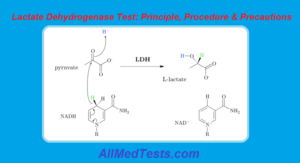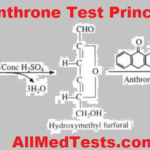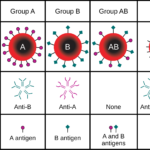Before we estimate Lactate Dehydrogenase, we need to know why it is important. The reason for doing anything must be mentioned and that’s why need to know the reason first. Well, lactate dehydrogenase has many uses especially clinically. When tissue damage happens, the increase of this enzyme is one of the reasons behind it. This damage can either be simple or complex. This means that it could either be severe cellular necrosis or small cell damage. Hepatic necrosis is one of the diseases behind which, the increase of this enzyme is one of the major reasons always. So, now you know that why LDH Test is very important. In this article, I will give you a complete account on this test. You are going to learn the principle, reagents, and the complete method for the estimation of lactate dehydrogenase. Let us begin then.
Recommended: SGOT Test By UV Method.
Lactate Dehydrogenase Test Principle:
Now I am going to mention the simple and easy principle for this test. It involved a simple reaction in which L-Lactate and NAD+ react to give us Pyruvate and NADH and also H+. LDH activity is directly proportional to the rate of LDH formed. This can be determined when increased absorbance is measured at 340 nm. Then comes the test concentrations talking about which is very important while we are studying the principle of this test. There are difference procedures with the help of which we measure the enzyme catalytic activities. Their procedures are the reference procedure being used in the measurement of test concentrations. The temperature of 37oc is the standard for the measurement of this element. So, this was the complete principle of the test. Once understood, you will be easily able to understand this test. Let us now talk about the reagents.

LDH Test Reagents:
The reagents used in this test are being categorized into two categories. The first category is named A and the other is named B. In the category A, we have methyl-glucamine and 61 MM of lactate solution. The PH of this solution is 9.4 at a temperature of 37 degrees. The reagent B consists of a solution which contains 61 MM of NAD. There is no need to do any preparations for these reagents. They are already prepared and now you have got to use them in the test. These reagents remain stable at a temperature of 2-8 degrees centigrade if not expired.
Lactate Dehydrogenase Test Procedure:
The procedure done in this test is automated analyzer which you must know how to operate while becoming a doctor. The rest of the test is easy and here, I am going to mention few parameters being involved in the test.
- a) Linearity: the reaction is linear up to 1000 U/l. For higher values dilute sample 1+4 parts with saline (9 g/L NaCl), repeat the assay and multiply the result by the dilution factor.
- b) Detection limit: 4 U/l.
- c) Quantification limit: 20 U/l.
Precautions for the Estimation of Lactate Dehydrogenase:
There are certain precautions which you need to take before performing this test. Let us now mention them for you.
- Make sure that all the samples being used in the test are measured correctly.
- The centrifuge of plasma is also very important before you go ahead to perform this test.
- Make sure that none of the reagents are contaminated.
Once you have taken care of all these precautions, your test is going to be a successful one.
Final Words:
So, this was everything you needed to know about the Lactate Dehydrogenase Test. If you have any question about this test then you can leave it in the comment section and I will reply ASAP. Also, leave us your feedback about our site. Don’t forget to keep visiting our website All Med Tests for more interesting tests like this one. Stay tuned Doctors!






Leave a Reply